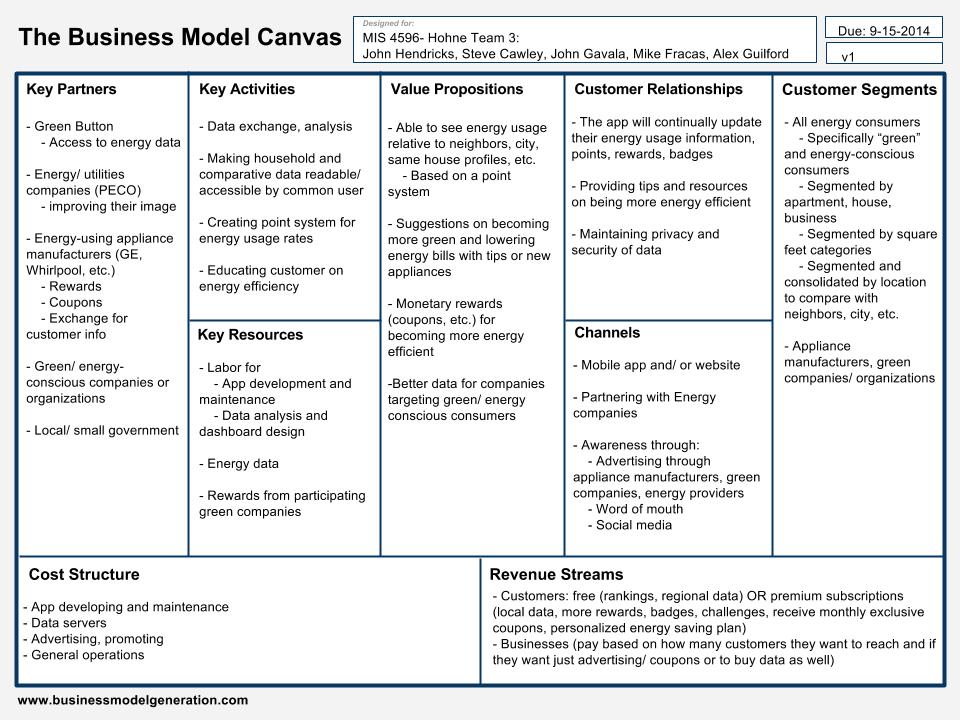
For this section, listing all partners is unnecessary. Key Partnershipsīusiness canvas focuses on tangible aspects of business operations, and partnerships are among its key pillars. These should be the user types that have the potential of generating the most revenue for your business. You can segment users by their favorite product categories, time of making a purchase, frequency, etc.īusiness canvas is supposed to be brief – so the best strategy is to choose 4-5 leading segments and focus on them.
#BUSINESS PROJECT CANVAS SOFTWARE#
Software development companies focus on types of devices, operating systems, browsers that users normally use. These users will have different needs and challenges. For instance, if you are building a booking or tourism-related platform, you interact with businesses and individuals. Often, businesses tend to gravitate to one or the other, but business models combine both. These qualities will influence their behavior later on and allow you to perform basic targeting. Split your customers into segments by gender, age, location, occupation. There are many ways of defining user performance and performing customer analysis, but here are few ideas. To define customer segments, you need to analyze your clients by demographic and behavioral characteristics. With a business model canvas, the entire team will have one-page guidance on developing a business model.
#BUSINESS PROJECT CANVAS HOW TO#
This article will give a practical guide on how to describe business concept examples and analyze real-life business models. This is called a left/right split of the business canvas. The aspects described on the right side refer to means of generating revenue. Sure, there’s a format to follow, but deviations are possible in the tone of voice, fonts, narration style.Ĭategories that are located on the left side of the canvas are the ones that require investments and nurturing. Since canvas encourages visual representations, businesses can show their tone of voice and approach clearer. Similarly, cost structure and revenue streams belong in the same row. Key partners, activities, and resources are located together – because these aspects are closely related. All sections are distributed based on their meaning.

For example, the cost structure is always in the left bottom part together with revenue streams. Sections always follow a precise order.Investors, stakeholders, partners get used to seeing particular information where it belongs – so that everyone is literally on the same page. No information is entered “just in case.”īusiness model canvas is easy to read because it always follows the same format. Focus on practical matters: business model canvas features useful answers to urgent questions.The style: no sales talk on technical jargon, canvas describes the business model in everyday language.Fewer words, more meaning: the more concise canvas is, the better it’ll convey its key points.Clear structure: each section of a business model canvas is located within its “square”.The document volume: just one page versus old-fashioned 20-30-page documents.

Here’s a rundown of differences compared to the traditional approach. The main advantage of switching from plain-text plans to visual canvas is its readability. The Format of Business Model Canvas Explained What are the main distribution channels and approaches to managing them?.Who are the main customers? Business canvas can consider both primary and secondary target audiences.How much does it cost to start a business? What’s a brief estimate of major expenses?.What is the main value offered to a customer by a company’s product or service?.Instead of describing the abstract vision, the document focuses on answering the following questions: Rather than describing the detailed vision, mission, operations, it answers key questions – and the team derives the conclusion from this answer.īusiness model canvas is more attainable than a business plan. What’s a Business Canvas?īusiness canvas, also known as a lean business plan, is a time-saving approach to business planning, opposed to traditional planning methods. After all, no matter how good your business plan is, it might not account for a global pandemic. Spending time preparing business plans that end up being detached from reality led to increased expenses. However, the ever-changing startup climate that emerged over the last decade made this approach irrelevant. Business plans aimed to foresee the situation in the scale of decades.

In the past, business owners created extensive business plans that described the detailed specifics of value proposition and operations. Over the last decade, the approach to planning and organizing a business changed a lot.


 0 kommentar(er)
0 kommentar(er)
